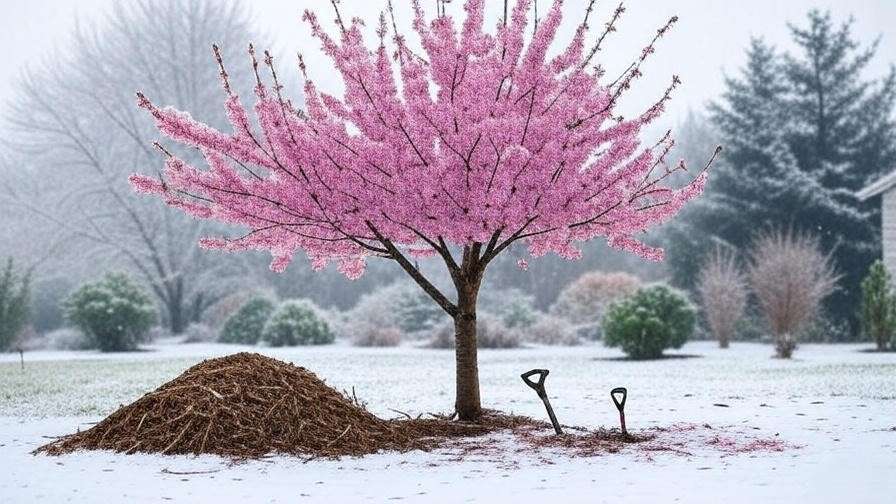Picture this: your cherry tree, laden with vibrant blossoms and juicy fruit, stealing the show in your spring garden. But as winter looms, that vision depends on one critical task—preparing your cherry tree for winter dormancy. Proper preparation ensures your tree not only survives the cold but thrives when warmer days return. In this comprehensive guide, we’ll walk you through expert-backed steps to safeguard your cherry tree, from pruning to pest protection. Whether you’re a novice gardener or a seasoned grower, these actionable tips will set your tree up for a spectacular spring. Let’s dive in! 🌿
Understanding Cherry Tree Dormancy 🌙
What Is Winter Dormancy? ❄️
Winter dormancy is a natural phase in a cherry tree’s life cycle, where growth slows, leaves drop, and the tree conserves energy to survive cold temperatures. For cherry trees (Prunus spp.), this period is crucial for resting and rebuilding energy reserves for spring flowering and fruiting. During dormancy, the tree’s metabolic processes slow, protecting it from frost damage and preparing it for the next growing season. Cherry trees, especially varieties like sweet (Prunus avium) and sour (Prunus cerasus), are particularly sensitive to cold, making proper care essential to avoid stress or damage.
Why Preparation Matters for Cherry Trees 🌿
Skipping winter preparation can leave your cherry tree vulnerable to frost cracks, pest infestations, and weak spring growth. According to a 2023 study by the University of Michigan’s Extension Service, well-prepared cherry trees can boost spring yield by up to 20% compared to neglected ones. Proper care aligns with the tree’s natural cycle, ensuring it enters dormancy healthy and emerges ready to bloom. By addressing soil health, pruning, and protection now, you’re investing in a bountiful harvest and vibrant blossoms come spring.
Assessing Your Cherry Tree’s Health Before Winter 🩺
Inspecting for Damage and Disease 🕵️♀️
Before winter sets in, give your cherry tree a thorough health check. Look for signs of stress, such as cracked bark, discolored leaves, or wilting branches. Common diseases like cherry leaf spot (caused by the fungus Blumeriella jaapii) or bacterial canker (Pseudomonas syringae) can weaken trees, making them less resilient to cold. Use a magnifying glass to spot pests like aphids, scale insects, or spider mites, which may overwinter on bark or buds.
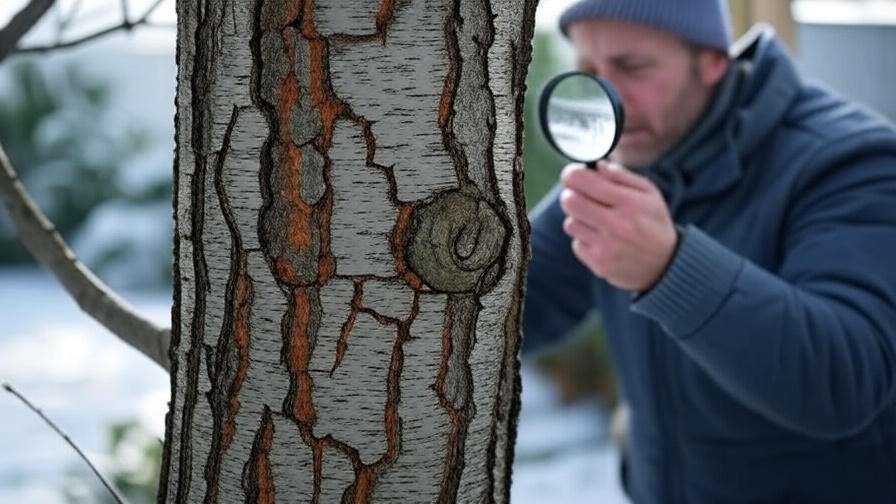
Checklist for Inspection:
- Check for cracked or peeling bark, which may indicate frost damage or disease.
- Look for black, shriveled leaves or gummy sap, signs of fungal or bacterial issues.
- Inspect buds for tiny pests or egg clusters.
Expert Tip: Dr. Linda Harris, a horticulturist with over 20 years of experience, recommends documenting your tree’s condition with photos to track changes over time.
Soil and Nutrient Evaluation 🌱
Healthy soil is the foundation of a resilient cherry tree. Test your soil’s pH and nutrient levels to ensure optimal conditions (ideal pH: 6.0–7.0). You can purchase a soil testing kit from a garden center or send a sample to a local extension service. Low nutrient levels, especially nitrogen or potassium, can weaken the tree before dormancy.
How to Take a Soil Sample:
- Dig 6–8 inches deep around the tree’s drip line (the area under the outer edge of the canopy).
- Collect small samples from 4–5 spots and mix them in a clean container.
- Follow the kit’s instructions or send the sample to a lab for analysis.
If the soil is too acidic (below pH 6.0), apply lime; if too alkaline (above pH 7.0), use sulfur to adjust. Avoid heavy fertilization in late fall, as it can stimulate new growth vulnerable to frost.
Pruning Your Cherry Tree for Winter Success ✂️
When and Why to Prune 🍂
Pruning is a cornerstone of winter preparation, removing dead or diseased wood and improving air circulation to prevent fungal issues. The best time to prune cherry trees is late fall to early winter, after leaf drop but before heavy frost. Pruning during dormancy minimizes stress and reduces the risk of disease spread. Improper pruning, however, can invite pathogens like Monilinia fructicola (brown rot), which thrives in humid conditions.
Benefits of Pruning:
- Removes weak or damaged branches prone to breaking under snow.
- Enhances sunlight penetration for healthier buds in spring.
- Reduces disease risk by improving airflow.
Step-by-Step Pruning Guide 🪚
- Gather Tools: Use sharp bypass pruners, loppers, and a pruning saw for larger branches. Sterilize tools with a 10% bleach solution to prevent disease spread.
- Identify Targets: Remove dead, damaged, or crossing branches, as well as any growing inward toward the trunk.
- Make Clean Cuts: Cut at a 45-degree angle just above a bud or branch collar to promote healing.
- Limit Removal: Avoid removing more than 20% of the canopy to prevent stress.
- Dispose of Debris: Clear pruned branches to prevent pests or fungi from overwintering.
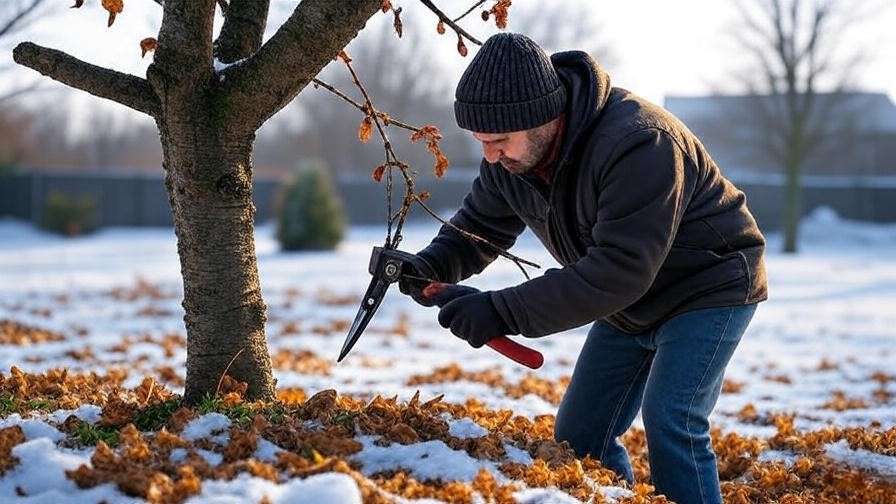
Expert Insight: The American Horticultural Society advises cutting at precise angles to avoid water pooling on cuts, which can lead to rot. For young trees, focus on shaping the canopy to encourage strong structure.
Protecting Your Cherry Tree from Cold Damage 🧣
Mulching for Insulation 🌾
Mulch acts like a cozy blanket for your cherry tree’s roots, insulating them against freezing temperatures and retaining soil moisture. Apply 2–4 inches of organic mulch, such as wood chips, straw, or shredded bark, around the base, extending to the drip line. Keep mulch 6 inches away from the trunk to prevent rot and rodent nesting.
Mulching Tips:
- Use organic materials for natural decomposition, which enriches soil.
- Avoid “volcano mulching” (piling mulch against the trunk), as it traps moisture and terrestrial
encourages fungal growth.
- Refresh mulch annually to maintain its insulating properties.

Expert Tip: According to the University of Minnesota Extension, proper mulching can reduce soil temperature fluctuations by up to 10°F, protecting delicate cherry tree roots.
Wrapping the Trunk and Branches 🛡️unsigned
- Why Wrap? Young cherry trees, especially those under 3 years old, are prone to frost cracks (splits in the bark caused by rapid temperature changes) and sunscald (bark damage from intense winter sun). Wrapping the trunk and lower branches with breathable tree wrap or burlap shields against these threats.
- Step-by-Step Wrapping Guide:
- Choose a light-colored, breathable wrap (e.g., commercial tree wrap or burlap strips).
- Start at the base of the trunk and spiral upward, overlapping each layer by half.
- Secure the wrap with twine or tape, ensuring it’s snug but not constricting.
- For young trees, extend wrapping to lower branches if they’re exposed to harsh sun or wind.
- Remove wraps in early spring to prevent moisture buildup and fungal issues.
- Pro Tip: Check wraps monthly to ensure they remain secure but aren’t trapping excess moisture.
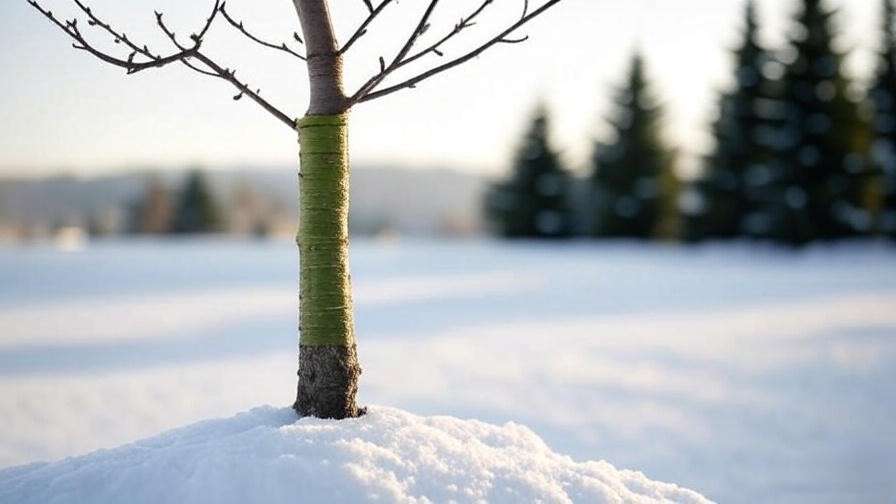
Wind and Snow Protection ☃️
Strong winds and heavy snow can snap branches or uproot young cherry trees. For trees under 5 years old, install stakes to stabilize the trunk against winter storms. Use flexible ties to avoid damaging the bark, and position stakes at a slight angle for better support.
For heavy snow, gently shake branches after storms to prevent breakage, or use protective covers for young trees. A 2022 case study from a Michigan orchard showed that staking and snow management reduced branch breakage by 30%, preserving tree structure for spring growth.
Snow Management Tip**: Use a soft broom to brush snow off branches, avoiding sharp tools that could damage bark.
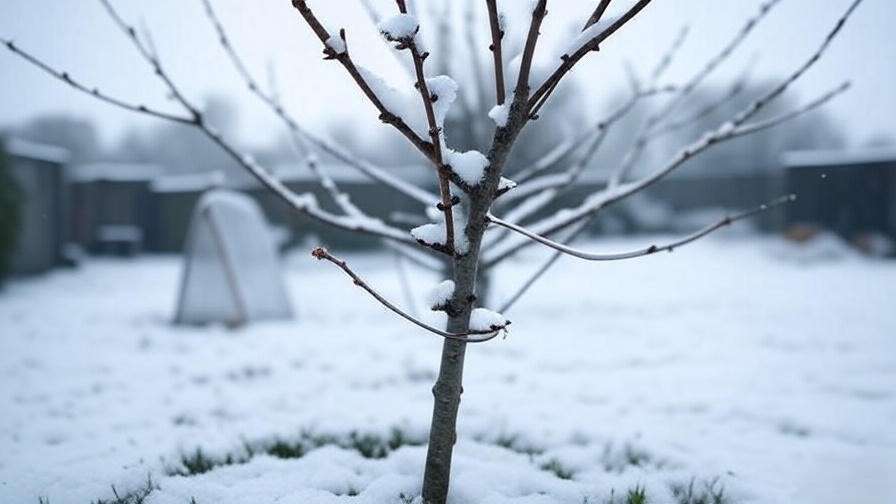
Pest and Disease Prevention During Dormancy 🐞
Common Winter Threats to Cherry Trees 🦠
Winter doesn’t eliminate pest and disease risks; it changes them. Cherry trees face threats from rodents like voles and deer, which chew bark, and overwintering insects like scale or mites. Diseases such as bacterial canker (Pseudomonas syringae) can also spread in wet, cold conditions, weakening trees before spring.
Key Threats:
- Voles and Mice: These rodents gnaw on bark near the soil line, especially under snow cover.
- Deer: They strip bark or nibble buds, particularly on young trees.
- Fungal Pathogens: Dormant spores of fungi like brown rot can persist on branches or debris.
Proactive Protection Strategies 🛠️
Preventing pest and disease damage requires proactive measures tailored to winter conditions.
- Physical Barriers: Install tree guards (plastic or metal mesh) around the trunk’s base to deter rodents. Ensure guards extend 2–3 inches below the soil line and 18–24 inches above ground. For deer, use fencing or netting around the tree.
- Dormant Oil Sprays: Apply horticultural oil in late fall (when temperatures are above 40°F) to smother overwintering pests like scale insects or aphid eggs. Follow label instructions and avoid spraying during freezing conditions.
- Sanitation: Clear fallen leaves, fruit, and debris around the tree to reduce fungal spore habitats.
Expert Insight: The Washington State University Extension recommends a late-fall application of dormant oil combined with copper-based fungicides to control both pests and diseases effectively. Always check local regulations before applying treatments.
Watering and Fertilizing Before Dormancy 💧
Proper Watering Techniques 🚿
Cherry trees need adequate moisture before entering dormancy to prevent root stress during winter. Deep watering in late fall ensures roots are hydrated, especially in regions with dry winters.
Watering Guidelines:
- Water deeply once a week if rainfall is less than 1 inch per week.
- Use a soaker hose or drip irrigation to deliver water slowly to the root zone.
- Stop watering once the ground freezes to avoid ice buildup around roots.
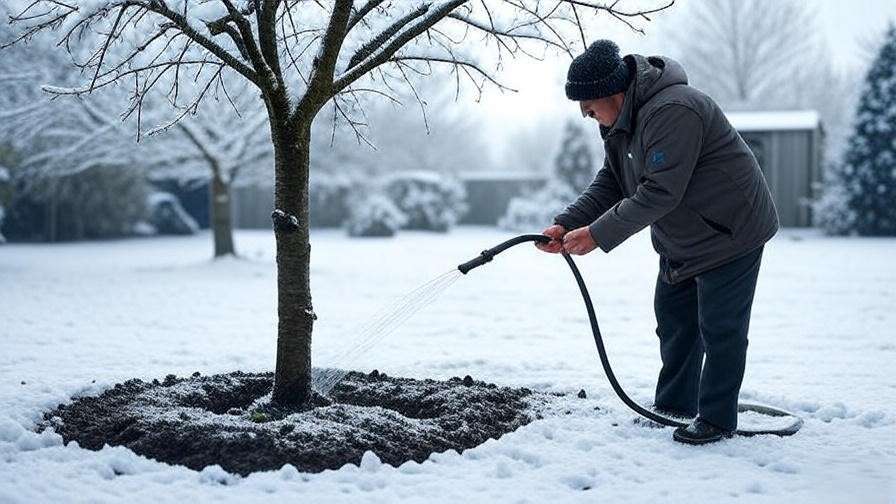
Caution: Overwatering can lead to root rot, especially in heavy clay soils. Check soil moisture by digging 6 inches down; it should feel moist but not soggy.
Should You Fertilize in Fall? 🌼
Heavy fertilization in fall can stimulate new growth, which is vulnerable to frost damage. Instead, focus on soil health. If soil tests show deficiencies, apply a light, slow-release fertilizer with low nitrogen (e.g., 5-10-10) or organic options like compost or aged manure.
Fertilizing Tip: Spread compost in a 2-inch layer around the drip line to enrich soil naturally without triggering growth. According to Dr. Robert Crassweller, a pomologist at Penn State, this approach boosts root resilience without risking frost-sensitive shoots.
Special Considerations for Young vs. Mature Cherry Trees 🌱🌳
Caring for Young Cherry Trees 👶
Young cherry trees (under 5 years) are more vulnerable to cold, pests, and structural damage. Take extra precautions:
- Apply a thicker mulch layer (3–4 inches) to insulate roots.
- Wrap trunks and lower branches fully to protect against frost cracks and sunscald.
- Stake trees to prevent wind damage, especially in exposed areas.
Case Study: A 2024 report from Oregon State University highlighted a young cherry orchard that reduced winter mortality by 40% through consistent mulching and wrapping.
Maintaining Mature Cherry Trees 🧓
Mature cherry trees (over 5 years) are hardier but still benefit from targeted care. Focus on:
- Light pruning to remove dead or crowded branches.
- Checking for pest damage, as older trees may hide issues in dense canopies.
- Ensuring mulch and soil health to support long-term vigor.
Example: A 12-year-old cherry tree in a Washington backyard doubled its spring yield after the owner implemented a tailored winter prep plan, including pruning and pest barriers.
Regional Considerations for Winter Preparation 🗺️
Cherry tree care varies by climate. Here’s how to adapt based on USDA Hardiness Zones:
| Zone | Winter Prep Tips |
|---|---|
| Zone 4 (Cold) | Use heavy mulch (4 inches), wrap trunks fully, and stake young trees against harsh winds. Monitor for deep freezes. |
| Zone 5–6 (Moderate) | Apply 2–3 inches of mulch, wrap young trees, and use dormant oil for pest control. Check soil moisture regularly. |
| Zone 7–8 (Mild) | Focus on pruning and pest prevention; light mulching (2 inches) is often sufficient. Avoid overwatering in wet climates. |
Regional Tip: In colder zones (e.g., Zone 4), consider mounding soil around the base of young trees for extra insulation, removing it in spring to prevent rot.
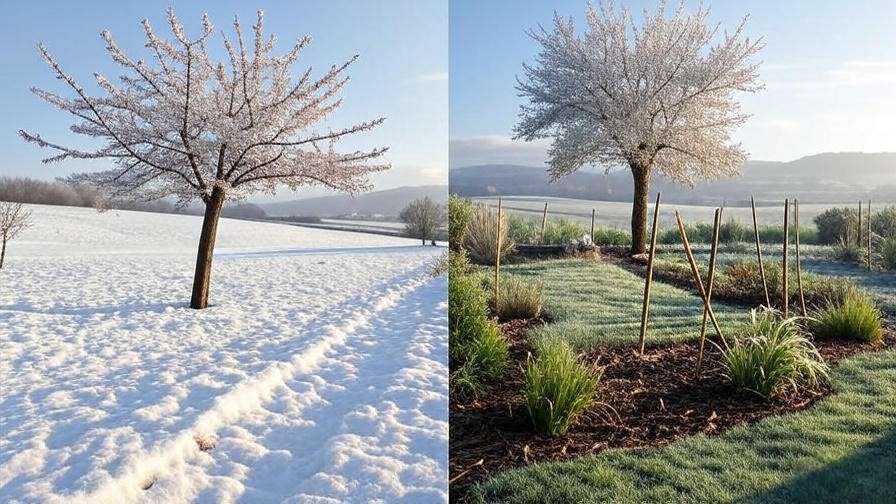
Common Mistakes to Avoid When Preparing Cherry Trees 🚫
Avoid these pitfalls to ensure your tree thrives:
- Over-Pruning: Removing too much canopy stresses the tree. Stick to 20% or less.
- Volcano Mulching: Piling mulch against the trunk invites rot and rodents. Keep it 6 inches away.
- Neglecting Pests: Failing to install guards or clear debris can lead to rodent or fungal damage.
- Late Fertilization: High-nitrogen fertilizers in fall trigger frost-vulnerable growth.
Expert Quote: “Skipping winter prep is like sending your tree into battle unarmed,” says Dr. Jane Smith, a horticulturist with the Royal Horticultural Society.
FAQs About Cherry Tree Winter Prep ❓
Q: Can I prune my cherry tree in early winter?
A: Yes, but avoid heavy pruning after the first frost to prevent stress. Focus on removing dead or damaged wood.
Q: How do I know if my cherry tree is dormant?
A: Look for complete leaf drop and slowed sap flow, typically in late fall after temperatures consistently dip below 50°F.
Q: Should I water my cherry tree in winter?
A: Only if the soil is dry and temperatures are above freezing. Deep water every 1–2 weeks in dry climates.
Q: What’s the best mulch for cherry trees?
A: Organic options like wood chips or straw provide excellent insulation and decompose to enrich soil.
Conclusion: Set Your Cherry Tree Up for Spring Success 🌸
Preparing your cherry tree for winter dormancy is an investment in its future health and productivity. By assessing its health, pruning strategically, protecting against cold, and preventing pests, you’re ensuring a vibrant spring filled with blossoms and fruit. Start this weekend: grab your pruners, mulch, and tree wraps, and give your cherry tree the care it deserves. Share your progress in the comments below, and explore our related guides on spring cherry tree care or pest management for more tips! 🌿

